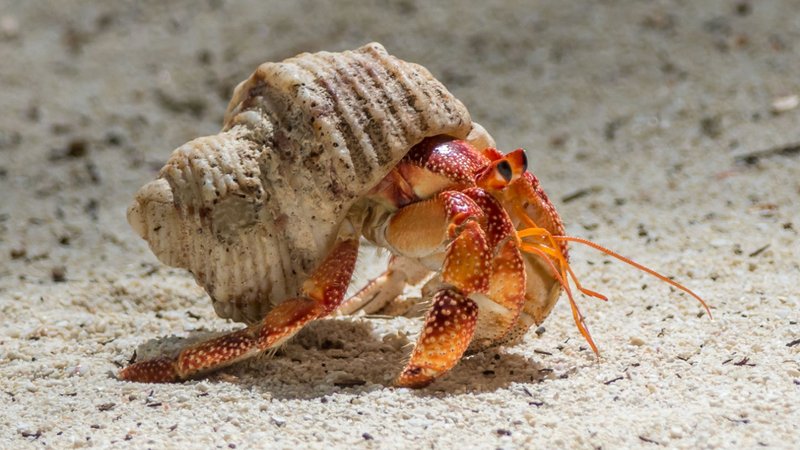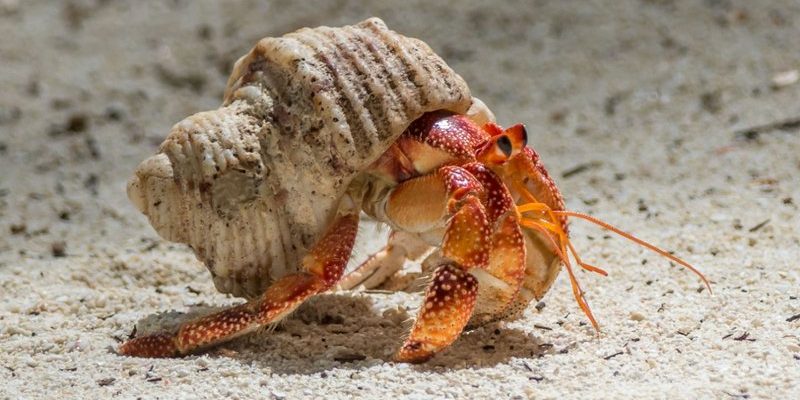
You might be wondering how to keep your hermit crab thriving with the right foods. It’s a bit like a chef crafting the perfect menu—balancing flavors, textures, and nutrients. Hermit crabs are opportunistic eaters, so they often consume what’s available, ranging from algae to fruits. Understanding their dietary needs not only keeps them healthy but also gives you a peek into their fascinating lifestyle. So, grab a cup of coffee, and let’s explore the dietary delights of hermit crabs!
What Do Hermit Crabs Eat?
Hermit crabs are omnivores, meaning they eat both plant and animal matter. This makes their diet pretty versatile and interesting! In the wild, they feast on decaying leaves, algae, and tiny crustaceans. But in captivity, we have the responsibility to mimic these natural feeding habits. Here are some staples you should consider when thinking about your hermit crab’s diet:
- Commercial Foods: Specially designed hermit crab food is widely available. These pellets often contain a mix of seaweed, shrimp, and essential nutrients.
- Fresh Fruits and Vegetables: Think bananas, apples, carrots, or cucumbers. Just make sure to chop them into small pieces!
- Protein Sources: Hermit crabs benefit from occasional proteins like fish flakes, cooked chicken, or even eggs. Just watch out for too much protein—balance is key!
Feeding them a variety of foods not only keeps things exciting but also ensures they get all the nutrients they need. A bit like having a well-rounded diet ourselves, right?
The Importance of Calcium
Calcium plays a significant role in the diets of hermit crabs, primarily for healthy shell development and overall growth. Without sufficient calcium, they might struggle to grow or even develop soft shells. Here’s how you can make sure your hermit crab is getting enough calcium:
– Calcium Sources: Offer cuttlebone, crushed eggshells, or specific calcium supplements. These can give your hermit crab a great boost!
– Natural Options: If you’re able, you can even give them safe, calcium-rich foods like kale or collard greens.
Always remember to keep an eye on how much calcium your hermit crab consumes. Too much can lead to health issues, just as too little can. Finding that balance is crucial to their well-being.
How Often Should You Feed Them?
You might be wondering about the frequency of feedings. It’s a bit different from how you might care for a dog or cat. Hermit crabs have unique feeding schedules that cater to their natural behaviors. Here’s a simple guideline:
– Daily Feeding: Offer small amounts of food every day. Think of it like leaving out snacks for a friend—you don’t want to overwhelm them, but you also want to ensure they have options!
– Remove Uneaten Food: After 24 hours, take away any leftovers. This helps prevent mold growth and keeps their habitat clean.
By following this routine, you’ll create a healthy environment and encourage your hermit crab to explore their food options!
Environmental Factors Impacting Diet
The environment in which your hermit crab lives can have a big impact on their feeding habits. Consider things like humidity, temperature, and even tank mates. Here’s a closer look:
– Humidity Levels: Hermit crabs thrive in humid environments. If your tank is too dry, your crab might not feel inclined to eat. Using a hygrometer can help you monitor this.
– Temperature: Keeping the tank at a consistent temperature, ideally between 72°F and 80°F, is essential. If it’s too hot or too cold, your hermit crab may become lethargic, leading to decreased appetite.
– Tank Mates: If your hermit crab shares its home with other crabs, feeding time can become competitive. Make sure everyone has enough space to eat comfortably.
Creating a suitable habitat can enhance their feeding experience and promote a more active lifestyle.
Common Mistakes in Hermit Crab Diets
Even seasoned crab owners can sometimes fall into traps with their hermit crab’s diet. Here are a few common mistakes to avoid:
– Overfeeding: It’s tempting to shower them with food, but too much can lead to obesity and health problems. Stick to manageable portions.
– Neglecting Variety: Feeding the same thing repeatedly can lead to nutritional deficiencies. Have fun mixing it up with different foods!
– Ignoring Freshness: Always check that the food you provide is fresh. Old or spoiled food can be harmful to your crab.
Being aware of these pitfalls can help you create a better feeding routine and ensure your hermit crab stays healthy and happy.
Feeding your hermit crab is more than just tossing in some food and walking away. It’s about understanding their needs, preferences, and the environment they thrive in. By providing a balanced diet full of variety and ensuring the right habitat conditions, you’re not just feeding them—you’re helping them live their best lives. So, whether you’re a seasoned hermit crab parent or just starting your journey, remember to keep learning and adjusting as needed. Just picture yourself as their culinary guide, ensuring your little friend has all the snacks they could ever want!

